This International Civil Engineering Landmark is commemorated jointly by CSCE and ASCE (American Society of Civil Engineers).
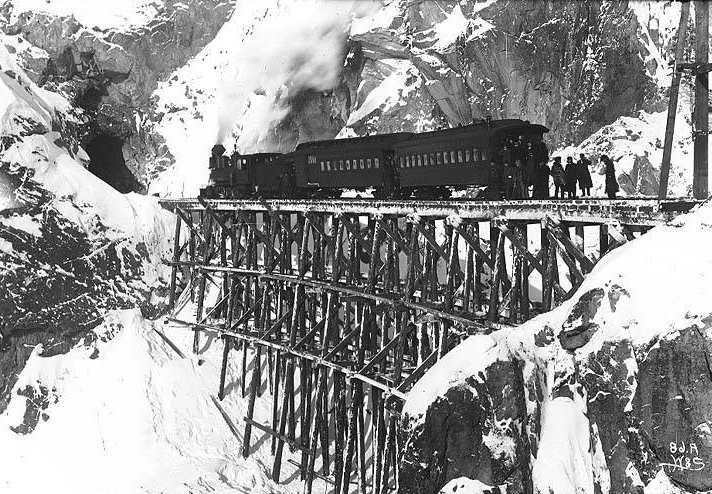
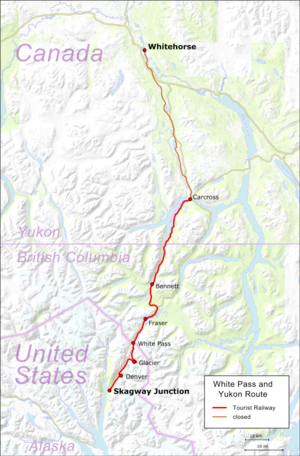
Site Location: Between Skagway, Alaska, and Whitehorse, Yukon.
Plaque Location: There are two commemorative plaques: in Carcross, YT., and Skagway, AK.
Carcross, YK.: Lat.: 60° – 9’ – 54”N.; Long.: 134° – 42’ – 22”W. (GPS: 60.1649717, -134.706196). On a pedestal outside the White Pass and Yukon Railway Station, Carcross, YT. From Yukon Highway 2, travel south west on Tagish Ave. (it is the first street north of the bridge across Nares Lake) 0.4 km, turning right on Dawson Charlie St. as Tagish turns hard right. The station is on the left.

Skagway, AK.: Lat.: 59° – 27’ – 0” N.; Long.: 135° – 19’ – 27” W. (GPS: 59.4499033, -135.324295). The plaque is mounted on a pedestal in front of The Train Shoppe, 231 2nd Ave., Skagway, AK. From the Skagway Ferry Terminal, walk 300 m north towards town to Broadway. Follow Broadway 300 m and turn right (south east) on 2nd Avenue. The Train Shoppe is 50 m on the right, and the plaque is on the south west wall of the building, adjacent to the railway tracks.


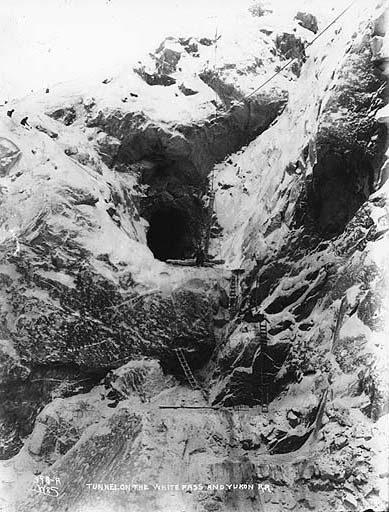
Description: The White Pass and Yukon Railroad was constructed between 1898 and 1900 to bring gold seekers from Skagway, Alaska to Lake Bennett, Yukon, which was linked to Dawson by navigable water. By 1900 the line had been extended to Whitehorse. The 176 km. (110 mi.) mile route was constructed by Canadian railway contractor Michael J. Haney with assistance from British railway engineer Sir Thomas Tancred, American engineer Erastus Corning Hawkins and Canadian civil engineer John Hislop. From sea level, at Skagway, the line climbs 2900 ft. (884m) in 20 miles (32km) to the USA-Canada border at Summit Lake at an average grade of 2.6%. The maximum grade is 3.9% and the maximum curvature 16°. About 35,000 men, mostly Canadian and American, built the line at a cost of, approximately, ten million dollars. The rails between Whitehorse and Bennet Lake remain, although there is no longer a train service on them.
Historic Significance: This railway is distinctive for many reasons other than the extremely difficult terrain that the route traverses. Most of the route is above the tree line in the midst of recorded snowfalls of 35 ft. (11m) and winter temperatures of –60°C (–65°F). The 66 m (215 ft.) high steel cantilever bridge constructed at Dead Horse Gulch is the highest, most northerly of its type in the world. The White Pass and Yukon Railway, in operation since 1900, is privately owned and has never received any government subsidy. It pioneered containerized freight and, because of interests in shipping and trucking, become part of a total transportation system.
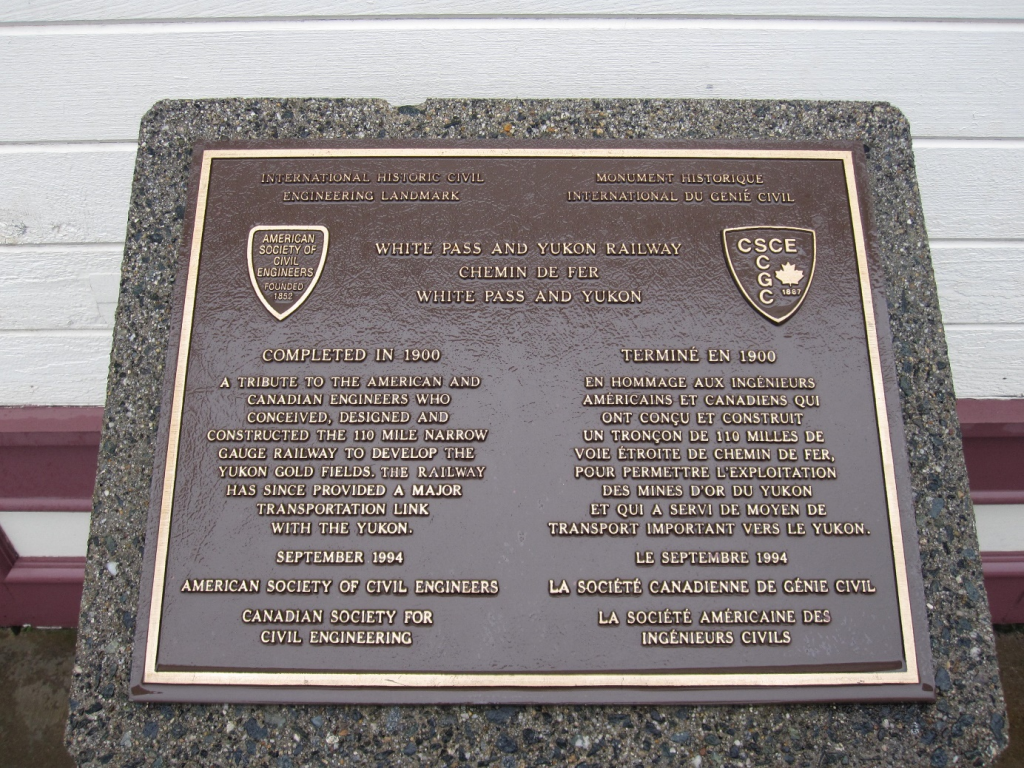
Plaque Wording: International Historic Civil Engineering Landmark. ASCE. WHITE PASS AND YUKON RAWhite Pass and Yukon RailwayILWAY. CSCE. Completed in 1900. A tribute to the American and Canadian engineers who conceived, designed and constructed the 110 mile narrow gauge railway to develop the Yukon gold fields. The railway has since provided a major transportation link with the Yukon. September 1994. American Society of Civil Engineers. Canadian Society for Civil Engineering.
Monument Historique International du Génie Civil. ASCE. CHEMIN DE FER WHITE PASS AND YUKON. Terminé en 1900. En homage aux ingénieurs américains et canadiens qui ont conçu et construit un tronçon de 110 milles de voie étroite de chemin de fer, pour permettre l’exploitation des mines d’or du Yukon et qui a servi de moyen de transport important vers le Yukon. Le septembre 1994. La société canadienne de génie civil. La société américaine des ingénieurs civils.
Plaque Unveiling Ceremony: Ceremonies were held in Skagway, Juneau and Whitehorse between September 9 and September 11, 1994.


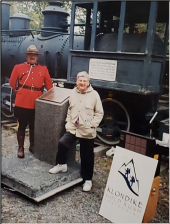
Links to Online Documentation:
White Pass and Yukon Route Railway homepage
Ken Johnson, “White Pass and Yukon Railway: Yukon’s Path to the Pacific”, CSCE 2012 Annual Conference paper.
“The White Pass: Wits, Grit and Guts” (video)
Yukon Department of Tourism and Culture, “White Pass and Yukon Route – Administrative History.”